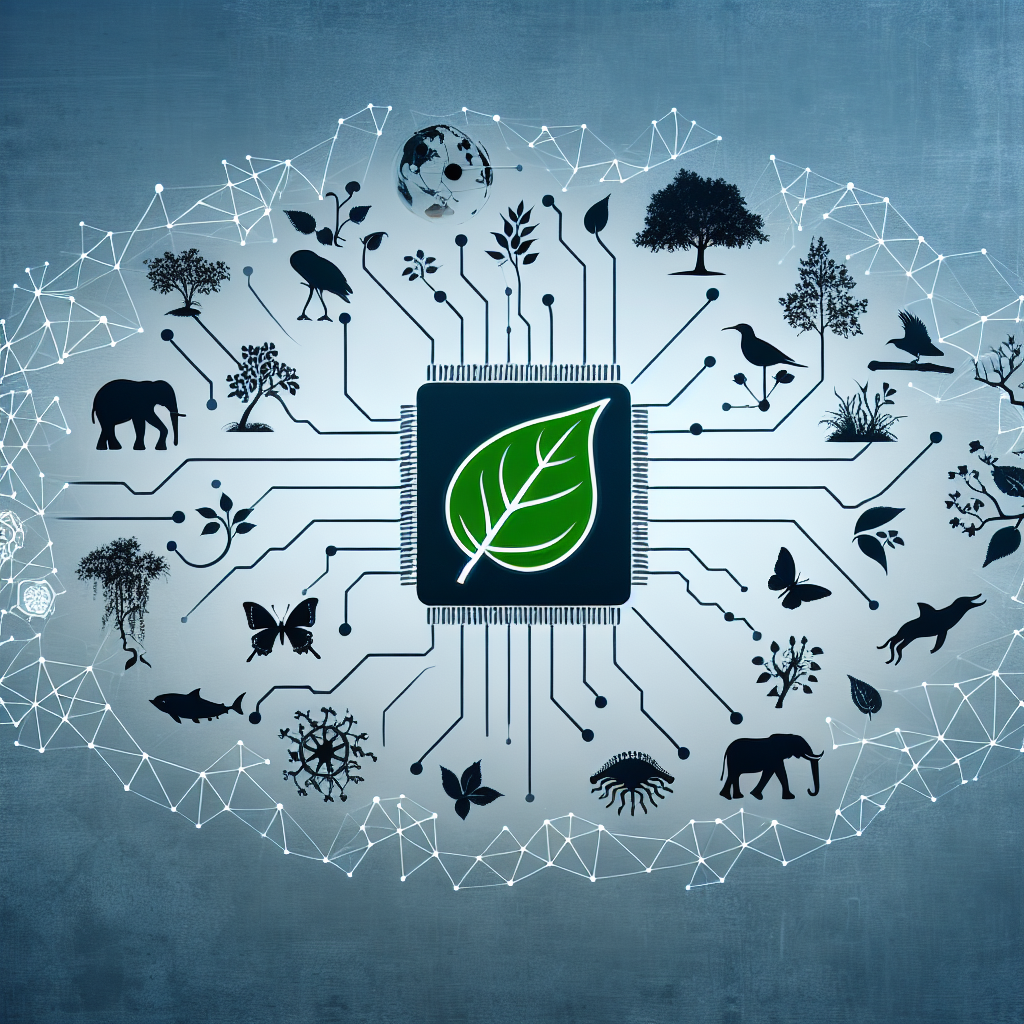The Role of AI in Promoting Biodiversity Conservation
Biodiversity is essential for the health and well-being of our planet. It refers to the variety of life forms on Earth, including plants, animals, and microorganisms, as well as the ecosystems in which they live. Biodiversity provides a wide range of ecosystem services that are crucial for human survival, such as clean air and water, fertile soils, and pollination of crops. However, biodiversity is currently under threat due to human activities such as deforestation, pollution, and climate change. In order to protect and conserve biodiversity, it is essential to use all available tools and technologies, including artificial intelligence (AI).
AI is a rapidly advancing field of technology that involves the development of computer systems capable of performing tasks that typically require human intelligence, such as learning, reasoning, and problem-solving. AI has the potential to revolutionize biodiversity conservation by helping scientists and conservationists collect, analyze, and interpret data more efficiently and effectively. In this article, we will explore the role of AI in promoting biodiversity conservation and discuss some of the ways in which AI can be used to address the challenges facing our planet’s biodiversity.
1. Monitoring and Surveillance
One of the key challenges in biodiversity conservation is monitoring and surveillance of species and ecosystems. Traditional methods of monitoring, such as camera traps and field surveys, can be time-consuming, labor-intensive, and costly. AI can help overcome these challenges by automating the process of data collection and analysis. For example, AI-powered drones can be used to survey remote areas and collect high-resolution images of habitats and species. AI algorithms can then be used to analyze these images and identify species, track population trends, and detect changes in habitat conditions. This can help conservationists monitor the health of ecosystems, identify threats to biodiversity, and prioritize conservation efforts.
2. Predictive Modeling
AI can also be used to develop predictive models of species distribution and habitat suitability. By analyzing large datasets of environmental variables, such as temperature, precipitation, and land cover, AI algorithms can predict where species are likely to be found and how they may respond to changes in their environment. This information can be used to identify areas that are critical for biodiversity conservation, prioritize conservation actions, and assess the potential impacts of climate change and other threats. Predictive modeling can also help conservationists plan for the future and make informed decisions about where to allocate resources for conservation.
3. Conservation Planning and Decision-Making
AI can assist conservationists in planning and decision-making by providing valuable insights and recommendations based on data analysis. For example, AI algorithms can analyze spatial data to identify areas of high biodiversity value, connectivity between habitats, and corridors for wildlife movement. This information can help conservationists design protected areas, wildlife corridors, and other conservation strategies that are more effective and efficient. AI can also be used to optimize the allocation of resources, such as funding, manpower, and equipment, to maximize the impact of conservation efforts. By using AI to inform decision-making, conservationists can make better-informed choices that lead to more successful outcomes for biodiversity conservation.
4. Combating Illegal Wildlife Trade
Illegal wildlife trade is a major threat to biodiversity, with millions of plants and animals being poached and trafficked each year. AI can help combat illegal wildlife trade by analyzing large volumes of data to identify patterns and trends related to poaching and trafficking activities. For example, AI algorithms can analyze social media posts, online marketplaces, and other sources of information to detect illegal wildlife products, track their supply chains, and identify the individuals and networks involved in these criminal activities. By using AI to monitor and disrupt illegal wildlife trade, conservationists can help protect endangered species and reduce the demand for wildlife products.
5. Public Engagement and Education
AI can also play a role in promoting public engagement and education about biodiversity conservation. By using AI-powered tools, such as virtual reality simulations, interactive maps, and educational games, conservationists can engage with the public in new and innovative ways. These tools can help raise awareness about the importance of biodiversity, inspire people to take action to protect the environment, and promote sustainable behaviors. AI can also be used to tailor conservation messages to specific audiences, such as policymakers, businesses, and local communities, to increase their understanding of biodiversity issues and encourage them to support conservation efforts.
Frequently Asked Questions (FAQs)
Q: What are some examples of AI technologies that are being used in biodiversity conservation?
A: Some examples of AI technologies that are being used in biodiversity conservation include machine learning algorithms for species identification, drones for aerial surveys, and predictive modeling for habitat suitability.
Q: How can AI help address the challenges facing biodiversity conservation?
A: AI can help address the challenges facing biodiversity conservation by improving data collection, analysis, and interpretation; optimizing resource allocation and decision-making; combating illegal wildlife trade; and promoting public engagement and education.
Q: What are some potential limitations or drawbacks of using AI in biodiversity conservation?
A: Some potential limitations or drawbacks of using AI in biodiversity conservation include the high cost of implementing AI technologies, the need for specialized training and expertise, and the risk of bias or errors in data analysis.
Q: How can individuals contribute to biodiversity conservation efforts?
A: Individuals can contribute to biodiversity conservation efforts by supporting conservation organizations, volunteering for conservation projects, reducing their environmental impact, and advocating for policies that protect biodiversity.
In conclusion, AI has the potential to play a valuable role in promoting biodiversity conservation by providing new tools and technologies to help scientists and conservationists monitor, analyze, and protect the Earth’s precious biodiversity. By harnessing the power of AI, we can better understand and address the threats facing our planet’s ecosystems and work together to ensure a sustainable future for all living beings.

